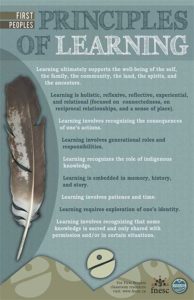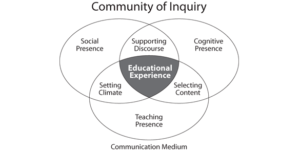How can you ensure equitable access to authentic, meaningful & relevant learning environments for all learners in K-12 open and distributed learning contexts? What did you already know, what do you know now based on the course readings and activities, what do you hope to learn?
Before beginning this course I had never thought about digital equity being anything more than a financial issue; after reading through the Topic 3 resources I learned that equitable access issues can be extremely complex. In my Topic 2 blog post I posed this question: “How can we best support learners with designations in online settings?” The readings from this week and have definitely given me inspiration to create meaningful online learning contexts.
After reading Basham et al. speak about the diversity of our learners and how we can help them best succeed in this environment I was able to see how the Universal Design for Learning(UDL) framework is an extremely important resource for all educators teaching in distributed classrooms, and in physical classrooms as well. UDL provides a framework that encourages multiple means of engagement, action and expression (Basham et al., 2020, p. 483). Research shows that students perform better and are happier when they are provided with voice and choice. Furthermore, I believe that allowing students the opportunity to make their own decisions regarding their own learning is crucial because it requires them to take responsibility of their own learning and learn about what works best for them personally. Online learning allows for different opportunities to differentiate learning due to the various technologies and programs that have been created specifically to help students. For example, Google Read and Write can replace the teacher scribing for a student; although they are very different, the outcome is similar.
I have never heard of Kral and Schrab’s 8 design principles until today but they really made me think about how I will set up my future classroom. The Design Principles are as follows:
“Design Principle 1: A space young people control
Design Principle 2: A space for hanging out and ‘mucking around’
Design Principle 3: A space where learners learn
Design Principle 4: A space to grow into new roles and responsibilities
Design Principle 5: A space to practice oral and written language
Design Principle 6: A space to express self and cultural identity through multimodal forms
Design Principle 7: A space to develop and engage in enterprise
Design Principle 8: A space to engage with the world” (Kral & Schrab, 2012, p. 58).
Design Principle 1 made me think about online classroom blogs, or assignments that require students to learn from each other, rather than learning from the teacher. Online classrooms provide an array of activities that young people can control!
Design Principle 5 is another example that can be easily implemented in a blended learning setting. Personally, I used to think that online learning only allowed opportunities for students to practice their written language. However, there are many tools and programs that students can use to practice oral language online as well; ultimately, this also contributes to creating equitable learning environments where all students can succeed.
Selwyn(2020) spoke about the effects that the COVID-19 pandemic and how it has affected students; he refers to this online learning as “emergency measures” (para. 5). The most interesting thing I learned was about how many businesses and online programs have been working hard to meet the needs of our schools and it has created a type of pandemic education race to see who can create the most effective tools. The article progresses to speak about access issues that have accompanied COVID-19 and I can totally relate. For example, I have been participating in #edci339 while my Mom has also been working from home and joining Zoom calls all day. Luckily, we have our own laptops but we constantly run into internet issues with both of us using so much for our video calls. This has given me a new appreciation for the importance of asynchronous learning. If I ever get the chance to teach in a distributed classroom I will ensure to always offer an asynchronous option as well as a synchronous option so that all students have the chance to join in. Even something as simple as when Verena videotaped the Zoom meeting with the guest speakers could be beneficial to students who do not always have access to the internet because then they can watch it on their own time but still be a part of the community.
References
Basham, J.D., Blackorby, J., Stahl, S. & Zhang, L. (2018) Universal Design for Learning Because Students are (the) Variable. In R. Ferdig & K. Kennedy (Eds.), Handbook of research on K-12 online and blended learning (pp. 477-507). Pittsburgh, PA: Carnegie Mellon University ETC Press.
Kral, I. & Schwab, R.G. (2012). Chapter 4: Design Principles for Indigenous Learning Spaces. Safe Learning Spaces. Youth, Literacy and New Media in Remote Indigenous Australia. ANU Press. http://doi.org/10.22459/LS.08.2012 Retrieved from: http://press-files.anu.edu.au/downloads/press/p197731/pdf/ch041.pdf
Selwyn. N. (2020). Online learning: Rethinking teachers’ ‘digital competence’ in light of COVID-19.[Weblog]. Retrieved from: https://lens.monash.edu/@education/2020/04/30/1380217/online-learning-rethinking-teachers-digital-competence-in-light-of-covid-19


